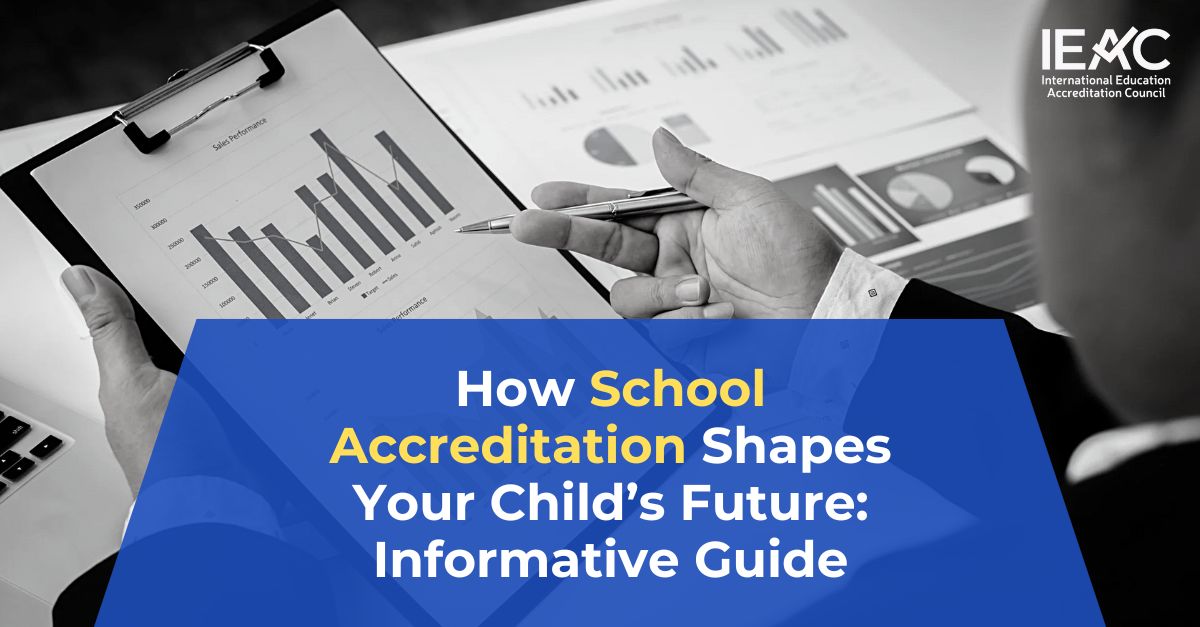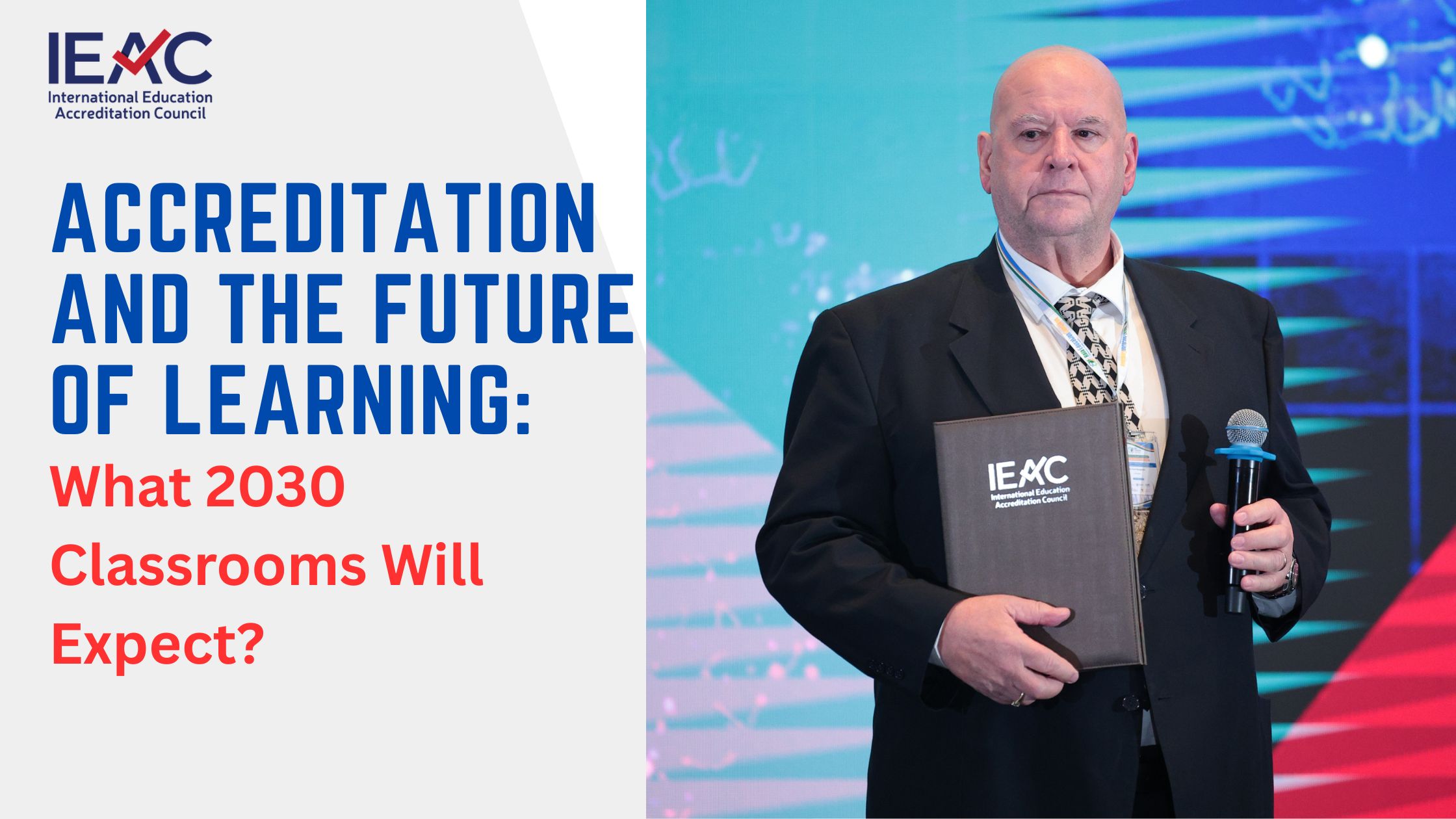- Home
- About IEAC
- Accreditation
- University Accreditation
- College Accreditation
- Online Institution Accreditation
- School Accreditation
- University Recruitment Agency Accreditation
- Programmatic Accreditation
- Teacher/ Lecturer Accreditation
- Religious Institutes Accreditation
- Affiliate Accreditation
- Research Accreditation Candidacy Accreditation
- IEAC Membership
- Institutions Accredited
- Accreditation Process
- Contact Us Webinar Apply Now
Blog
The Future of Accreditation: Using Technology to Streamline Standards in Higher Education
Lorem ipsum dolor sit amet, consectetur adipiscing elit, sed do eiusmod tempor incididunt ut labore et dolore magna aliqua. Quis ipsum suspendisse ultrices gravida. Risus commodo viverra maecenas accumsan lacus vel facilisis.
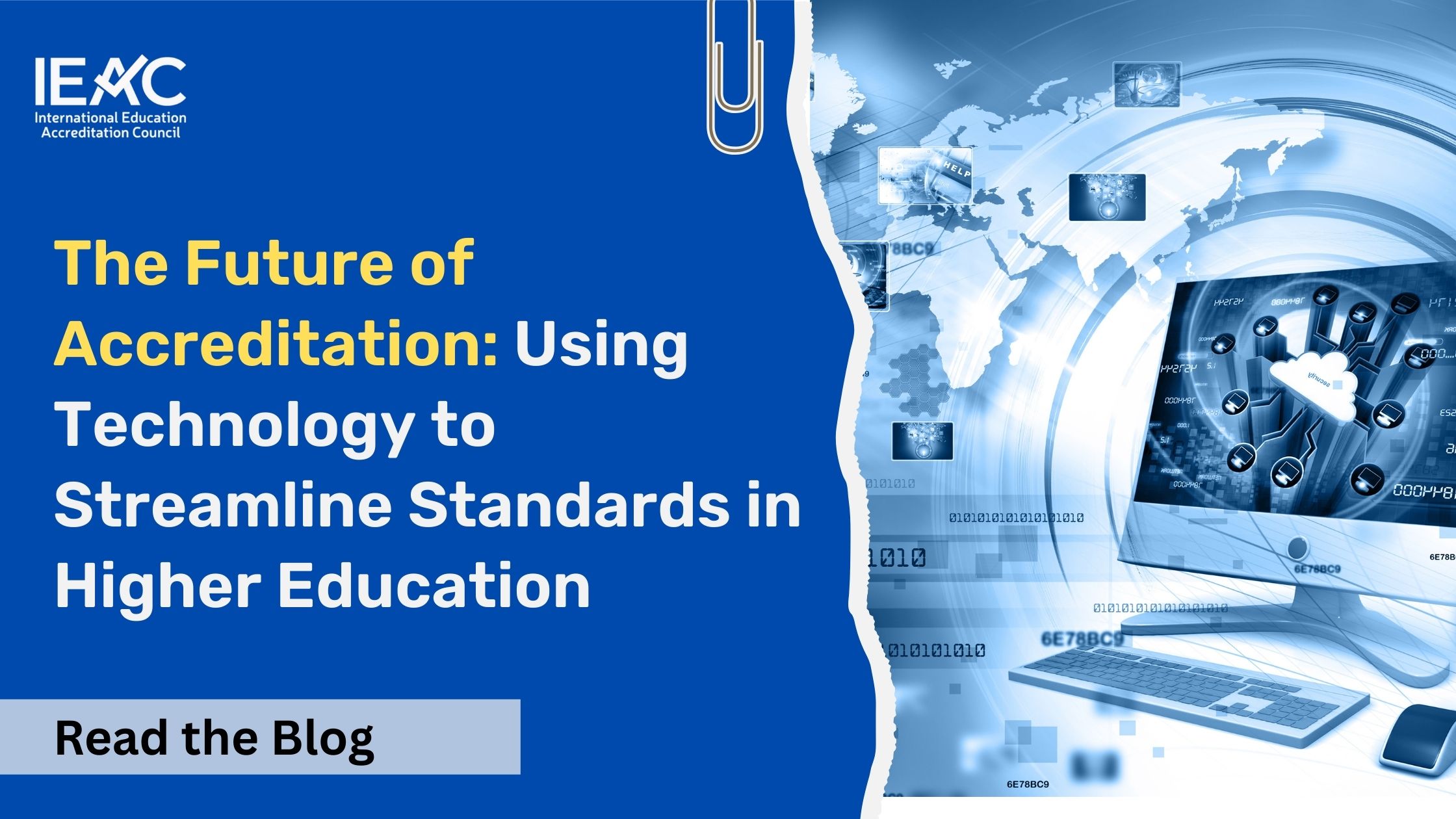
The Future of Accreditation: Using Technology to Streamline Standards in Higher Education
In today’s rapidly evolving higher education sector, fulfilling accreditation standards has turned into an ongoing and intricate challenge for institutions across the globe. The traditional approaches, once sufficient, now fall short in addressing the evolving demands of modern accreditation processes. With the stakes higher than ever, institutions are compelled to find innovative solutions to streamline their compliance efforts. This is where technological advancements transform the accreditation journey from a daunting task into an effortless and strategic asset.
By leveraging tools such as automation, cloud computing, and artificial intelligence, universities can enhance operational efficiency and maintain up-to-date accreditation data, ultimately turning compliance into a competitive advantage.
In this blog post, we explore the smartest ways higher education institutions can leverage technology to meet accreditation standards effortlessly while ensuring accuracy, transparency, and long-term impact.
Overview of Accreditation Challenges
Accreditation in higher education serves as a crucial benchmark for institutional quality and effectiveness. Yet, the journey toward achieving and sustaining accreditation is filled with obstacles. nstitutions must navigate evolving standards, provide accurate data, and manage an array of compliance tasks, all while ensuring high-quality educational outcomes.
Evolving Accreditation Standards
Accreditation standards in higher education are not static. They evolve to reflect the dynamic educational landscape, requiring institutions to continuously adapt. Directors of Accreditation need to assess a broader range of criteria, including student outcomes, diversity, and institutional objectives. This comprehensive approach demands more than mere box-checking; it calls for an in-depth understanding of both internal and external factors influencing the institution. Keeping pace with these changes can be daunting, as institutions struggle to operationalize standards without hindering their educational mission.
The Need for Accurate and Real-Time Data
For successful accreditation, timely and precise data is imperative. Institutions face significant hurdles in gathering and maintaining up-to-date information. Traditional data collection methods often fail to keep up with the rigorous demands of accreditation reviews, leaving gaps and inconsistencies that can jeopardize accreditation status. As expectations rise for transparent and quantifiable evidence, the need for technology-driven solutions to facilitate real-time data access and accuracy becomes apparent.
How to Use Technology to Meet Accreditation Standards Effectively
The strategic implementation of technology can transform the accreditation process from a burdensome obligation into a strategic asset. By employing advanced technological solutions, institutions can streamline operations, enhance data accuracy, and align more closely with accreditation standards and accreditation performance indicators.
AI-Powered Data Analytics
Artificial Intelligence (AI) offers revolutionary capabilities in data management for accreditation. AI-driven analytics tools can convert cumbersome datasets into concise, insightful reports. This not only simplifies the accreditation evidence presentation but enhances its quality. AI facilitates swift data retrieval and reduces errors inherent in manual processes, allowing institutions to showcase compliance with precision and efficiency.
Cloud-Based Systems for Compliance Information
Utilizing cloud-based systems can significantly enhance the storage and management of compliance information. These platforms provide a secure, centralized repository accessible from anywhere, fostering collaboration among teams regardless of their physical location. With cloud technology, the time-consuming processes of data retrieval are streamlined, promoting transparency and setting a new benchmark in demonstrating accreditation performance indicators.
Automation of Repetitive Tasks
Automation serves as a valuable asset in managing repetitive accreditation tasks. By implementing automated systems, institutions can significantly reduce the time and resources spent on tasks such as data compilation and reporting. Automation ensures consistency and minimizes human error, enabling staff to devote more energy to strategic initiatives aimed at achieving institutional improvement and meeting accreditation standards.
Real-Time Dashboards for Stakeholders
The deployment of real-time dashboards serves as a powerful tool for fostering transparency in higher education accreditation. These dashboards offer an instantaneous view of accreditation processes and compliance metrics, identifiable by all key stakeholders. By visually presenting timelines, standards, and progress, these tools facilitate informed decision-making and collaboration among faculty, administration, and regulatory bodies.
Blockchain for Academic Integrity
When it comes to safeguarding academic integrity, blockchain technology stands out as a game-changing solution. By adopting blockchain, institutions can create immutable, secure records of accreditation data. This technology ensures that once data is recorded, it cannot be altered without detection, offering an unparalleled level of data integrity. Blockchain not only safeguards against fraudulent activities but also guarantees the authenticity of student credentials and institutional records.
Outcome-Based Education (OBE)
Outcome-Based Education (OBE) aligns educational objectives with accreditation standards while centering on student success. Technology plays a critical role in this paradigm by enabling institutions to track and analyze student competencies effectively. By leveraging data analytics, educators can identify learning gaps and customize support for individual students. This targeted approach not only ensures compliance with accreditation requirements but also demonstrates measurable progress against accreditation performance indicators.
Feedback Mechanisms and Surveys
Feedback mechanisms and surveys are invaluable in continuously improving both the student experience and institutional practices. Such tools provide direct channels through which students can express their opinions, concerns, and suggestions regarding their educational experience. Institutions can deploy real-time survey tools to collect and analyze student feedback efficiently, allowing educators to respond swiftly to areas that require enhancement.
Final Thoughts
The integration of technology into the accreditation processes of higher education institutions presents a transformative opportunity. As we adapt to rapidly evolving requirements, the use of AI-powered analytics, cloud-based systems, and blockchain technology ensures accuracy, transparency, and efficiency. Automation reduces repetitive tasks, enabling staff to focus on strategic goals while maintaining compliance effortlessly.
Moreover, by engaging with students through real-time feedback and aligning educational outcomes with accreditation standards, institutions not only enhance the student experience but also demonstrate measurable success against accreditation performance indicators. Ultimately, embracing technology is the key to redefining how to use technology to meet accreditation standards, not just meeting them, but exceeding them with innovation and confidence.
Frequently Asked Questions (FAQ)
1. What does it mean to meet accreditation standards in higher education?
Meeting accreditation standards means an institution has proven its quality, accountability, and effectiveness in delivering education. Accrediting bodies evaluate areas such as student outcomes, faculty qualifications, academic integrity, and institutional governance to ensure compliance.
2. How can technology support accreditation processes?
Technology simplifies compliance by automating repetitive tasks, enabling real-time data collection, and creating centralized systems for documentation. From AI-powered analytics to cloud-based reporting, tech ensures institutions consistently align with accreditation performance indicators.
3. What are accreditation performance indicators?
Accreditation performance indicators are measurable benchmarks used by accrediting bodies to assess institutional performance. These include metrics like student retention, graduation rates, learning outcomes, and faculty-student ratios. Technology helps track and visualize these indicators in real time.
4. Why is real-time data important for accreditation?
Real-time data ensures institutions always have up-to-date and accurate records to present during reviews. With dashboards and analytics tools, universities can instantly demonstrate compliance, avoid last-minute data gaps, and build stronger trust with accreditation agencies.
5. How does Outcome-Based Education (OBE) connect with accreditation?
Outcome-Based Education directly ties student success with institutional performance. By using technology to measure competencies and learning outcomes, institutions can prove alignment with accreditation standards while improving personalized learning experiences.
6. Is automation really effective in accreditation compliance?
Yes, automation streamlines routine processes, reducing errors, saving valuable time, and standardizing tasks like compiling data, generating reports, and tracking evidence.This frees up faculty and administrators to focus on strategic improvements instead of administrative burdens.
7. Can blockchain really help in accreditation?
Absolutely. Blockchain creates tamper-proof academic records, ensuring student credentials and compliance data remain secure and verifiable. This builds transparency and strengthens institutional credibility during accreditation reviews.
8. How can feedback systems improve accreditation outcomes?
Student and faculty feedback provides real-time insights into areas needing improvement. When institutions integrate surveys and feedback loops into their systems, they not only enhance quality assurance but also provide accrediting bodies with evidence of continuous improvement.
9. What challenges do institutions face without technology in accreditation?
Without technology, institutions often struggle with manual errors, outdated data, time-consuming reporting, and inconsistent records. This increases the risk of non-compliance and weakens the institution’s ability to meet accreditation performance indicators effectively.
10. How to use technology to meet accreditation standards effortlessly?
Institutions can use a mix of AI analytics, automation, cloud systems, real-time dashboards, blockchain for academic integrity, and digital feedback mechanisms. Together, these tools simplify compliance, boost accuracy, and help exceed accreditation standards with ease.
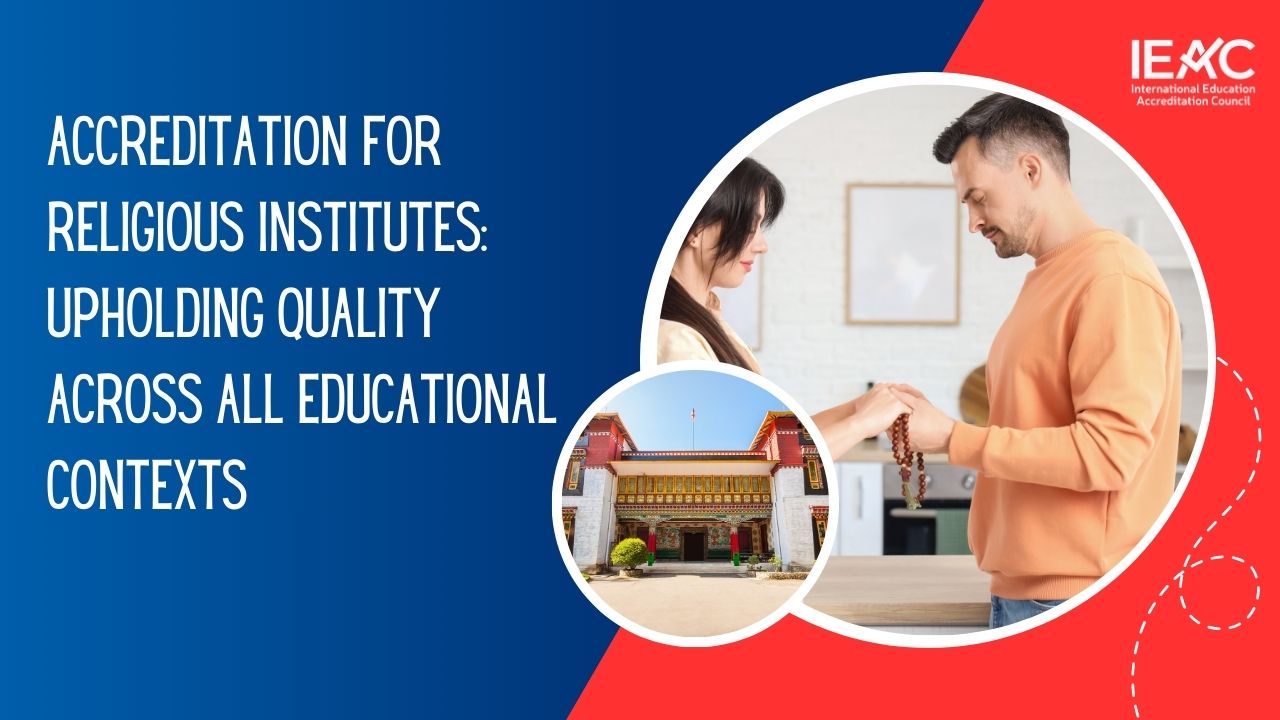

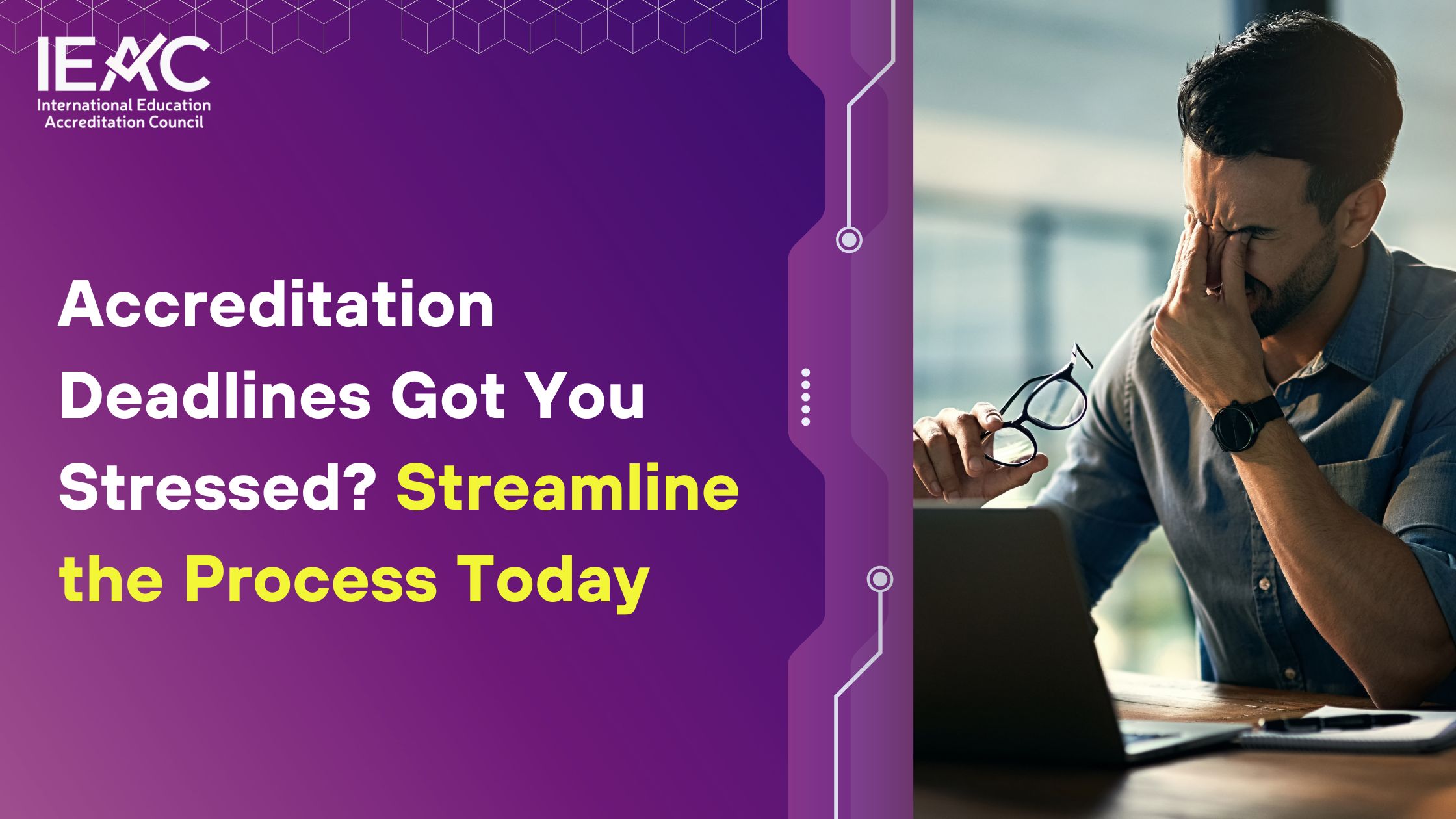
.jpg)
